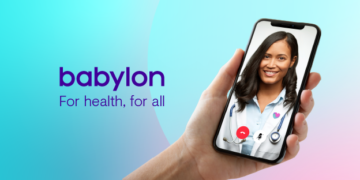One of the most challenging aspects of running a startup business is coming up with new offerings that are guaranteed to click with their target market. Product research and development can be costly and time-consuming, something that most startups cannot afford.
What they can do, however, is to conceptualize and create a minimum viable product (MVP). According to Bloomberg Cities Network in cooperation with John Hopkins University (2021), “MVP is a critical piece of how entrepreneurs experiment, learn, and build products the market wants.”
This article explores what MVPs are by giving a definition, some examples, and tips to help startups create their own.
What is a Minimum Viable Product?
Various sources have defined minimum viable products as a cost-effective and least time-consuming form of an offering, typically a service or a program.
According to IBM Garage, an acceleration program by tech giant IBM, MVP is intended to “reduce risks while [startups] increase return on investment by building only what is necessary.” This pertains to the minimum version of a service or program that requires minimal investments and features.
The main purpose of an MVP is to have a sort of prototype that can be used to test hypotheses regarding the provision of a service, the function of a product, or the application of a program. Because of this, only key features are present in MVPs.
Essentially, MVPs are designed for experimentation to know whether the investment is worth pursuing. This business technique is now being applied in government projects but is commonly used in software development.
In tackling the role of Agile software development in IT Modernization, Rob Klopp (2016) noted that MVP is one of the most important yet “one of the hardest ideas to master in the journey towards applying Agile methods.”
Klopp noted that software development always starts with an end goal in mind and is pursued backward to achieve the final state envisioned by developers and engineers. However, he noted that starting with the end-state in mind hinders agility as it prevents the adoption and evolution of the project based on existing and future conditions.
MVP requires developers to scroll back a few notches from the final product they envisioned and create an early and essential version based on starting point of the project.
Excellent Examples of MVPs
MVPs are not merely temporary experiments that do not come to fruition. There are a lot of successful companies that started as MVPs. Here are some of them.
One of the most used websites today is the social media platform Facebook. It was developed and launched by Mark Zuckerberg during his sophomore year at Harvard with the name The Facebook (History, n.d.). It was created as a tool to create a network of Harvard students where they can socialize and connect.
This was the MVP of Facebook. Thousands of people registered for the service within 24 hours of its launch. Today millions of people are on Facebook.
Spotify
Spotify started as a startup company in Stockholm, Sweden. It was created to fill the gap left by services like Napster and was being filled by piracy. The solution founder and CEO Daniel Ek came up with is to provide a service that users play music from online sources with minimal latency (Contributor, 2017).
This first launch is considered the Spotify MVP because it was only available in Sweden. Moreover, Ek is confident that the viable aspect of this MVP is its effort to provide low-latency streaming services.
Dropbox
A report by a Tech Crunch Contributor (2011) talked about the beginnings of cloud storage service Dropbox as an MVP. However, the MVP is not the typical product one would expect, especially as it is difficult to create a prototype of Dropbox’s service without fully entering into development mode. It requires integration into various devices.
The Dropbox MVP came in the form of a video demonstration of how the service works. It features a voice-over made by CEO Drew Houston complete with a visual aid that allows viewers to follow the step-by-step process of using the app. This proved to be highly effective as the company is now a competitor in the cloud storage market and the service is used by millions.
Startup Tips for Creating an MVP
With knowledge of some of the best examples of MVPs and the level of success they have reached since their releases, entrepreneurs may be looking for ways to jumpstart their business with the help of MVPs. The following are valuable tips for startups.
1. Identify a Problem
One thing that the example companies have in common is that they saw a gap and they decided to fill it. They found a problem that they could have a solution for by looking at their industry and their target market. This scientific approach is the best way to start conceptualizing an MVP.
2. List Down How to Address it in Theory
Upon identifying a problem, the next step is not to come up with an absolute solution, but to create hypotheses about them. Entrepreneurs need to come up with scenarios of how their ideas can help their target market.
3. Use Existing Data
Startups are not always companies that are starting from scratch. Many of what are considered startups have been around for a few years. This means that they already have some data to draw from. The best way to go is to use such information to identify a problem and make hypotheses. This data can also be used to develop features.
4. Come Up with a Creative Solution
The operative work in MVP is the word “minimum.” Entrepreneurs can come up with various viable solutions, but they are not always the minimum. Creating an MVP requires creativity and imagination in that the startup needs to convey the usability and key features of the product without spending too much time and money.
Conclusion
Minimum viable products are a great way to see whether a new product, service, or program is worth the investment. Startup owners who are looking for the next big thing for their company can use this method to develop new offerings.
References
- Bloomberg Cities. (2021). Explainer: What is an ‘MVP’ or ‘minimal viable product?’ Retrieved from https://bloombergcities.jhu.edu/news/explainer-what-mvp-or-minimal-viable-product
- Klopp, T. (2018). Modernizing federal IT part 6: Agility and evolving a minimal viable product. Retrieved from https://www.cio.gov/2016/11/07/ssa-modernization-6.html
- History. (n.d.). Facebook launches. Retrieved from https://www.history.com/this-day-in-history/facebook-launches-mark-zuckerberg
- Contributor. (2017). Founder of Spotify says your taste in music is more specific than you think. Retrieved from https://www.huffpost.com/entry/founder-of-spotify-says-y_b_9254158
- Contributor. (2011). How Dropbox started as a minimum viable product. Retrieved from https://techcrunch.com/2011/10/19/dropbox-minimal-viable-product/





























